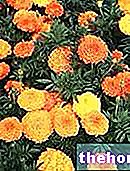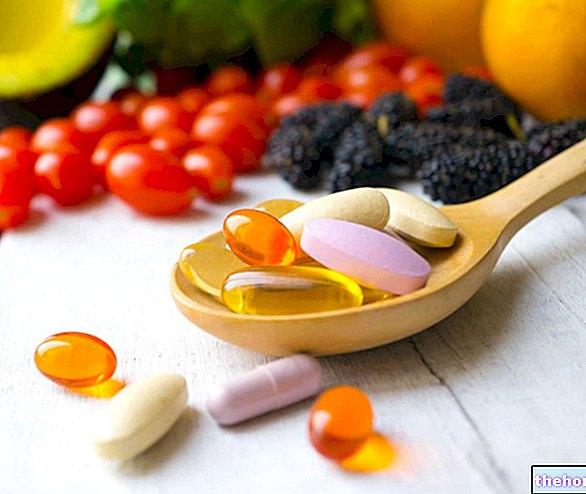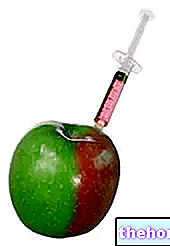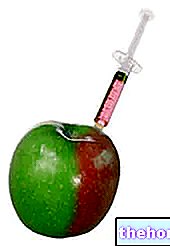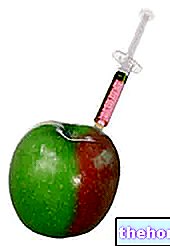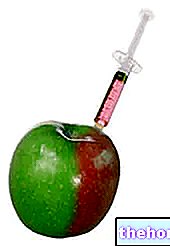Food dyes are substances that give a color a food or restore its original color; they include natural components of foods and other elements of natural origin, normally not consumed as food or used as a typical ingredient in foods.
Dyes are preparations obtained from foods and other basic edible materials, of natural origin, obtained by a physical and / or chemical process that involves the selective extraction of pigments, in relation to their nutritional or aromatic components.

Particular attention must be paid to dyes intended for cosmetics: since these dyes, for example those used for lipstick, can be ingested, they are subject to the same restrictions and controls as those applicable to food dyes.
For some foods, Italian law prohibits the use of any type of dye. These foods are: coffee, chocolate, nougat, vinegar, fruit juices, wine, beer, oil, "water, bread, pasta, rice, sugar, honey, meat and fish. These products must be offered to the public in their natural color; otherwise it is a fraud to mask the lack of genuineness of a product or its state of alteration.
The very recent EU legislation requires, starting from 20 July 2010, that additional indications appear on the label for some dyes. These are those dyes for which, over the years, studies on the ability to concentrate and attention children, especially in schools, have shown a "negative influence. Some children are in fact more sensitive to processed foods and show immediate effects. immediately after ingestion of food containing dyes. In any case, the toxicity of an additive is always in relation to the quantity ingested and also depends on the interference it has with other additives.
Dyes without side effects: of the dyes currently permitted, this category mainly includes vitamin groups (such as vitamin B2), provitamins (such as beta-carotene) and natural components such as chlorophyll, carotenoid and beetroot. Their safety is undoubted, so much so that they can be used in food without explicit indications. However, in the event that the addition of these dyes can mask the actual quality of the food in which they are contained from the consumer, they must be reported on the label.
Dyes with side effects: there are different dyes (above all azoic ones, ie those dyes that formally derive from azobenzene and therefore have the azo group –N = N– between two aromatic rings of benzene, but also of naphthalene, of " anthracene or aromatic heterocycles; they are also called azo dyes) on which it is possible to hypothesize a certain risk factor for human health. In particular, cases of allergic reactions may occur, sometimes caused even by very small parts of these dyes, especially in those people with allergies to acetylsalicylic acid (aspirin) as well as to salicylates.
There are many people who, every year, are affected by hives due to allergic reactions to food additives. About 10% of asthmatics react to azo dyes with asthma attacks.
Which foods can dyes be added to?
According to the latest provisions, the foods that can be treated with the permitted dyes are above all the following:
Confectionery: icings and sugar-based products, with the exception of licorice and products prepared with milk, butter, honey, eggs, malt, caramel, cocoa, chocolate, coffee; cherries for cocktails; candied fruit, with the exception of candied orange and lemon peels; packaged ice creams; marzipan and the like.
Fish: products based on fish roe; shrimp in a jar; canned salmon fillets.
Other products: low-calorie jams, creams and jellies, puddings, sweet sauces and soups with the exception of products based on cocoa, chocolate, coffee, eggs and caramelized sugar; effervescent drinks, packaged drinks, margarine, cheeses, liqueurs with herbs; strawberry, raspberry and cherry preserves.
Directions on the package:
Due to the long and complicated chemical definitions, the complete indication of the dyes on the food packaging is not necessary.
According to the regulations in force, the indication “colored” or “with dye” must be printed in clear letters on one visible side of the package, at a short distance from the commercial name (for example strawberry candies with dye). A more precise characterization must then be reported in the list of ingredients, where the list of additives can be found.
What are the dyes?
Dyes can be classified both on the basis of the color they give to the foods to which they are added, and on the basis of their origin. Below we group them according to the first classification.
E100-109
YELLOW COLOR
E110-119
ORANGE COLOUR
E120-129
RED
E130-139
BLUE COLOR
E140-149
GREEN COLOUR
E150-159
BROWN-BLACK COLOR
E160-199
MIXED COLOURS


